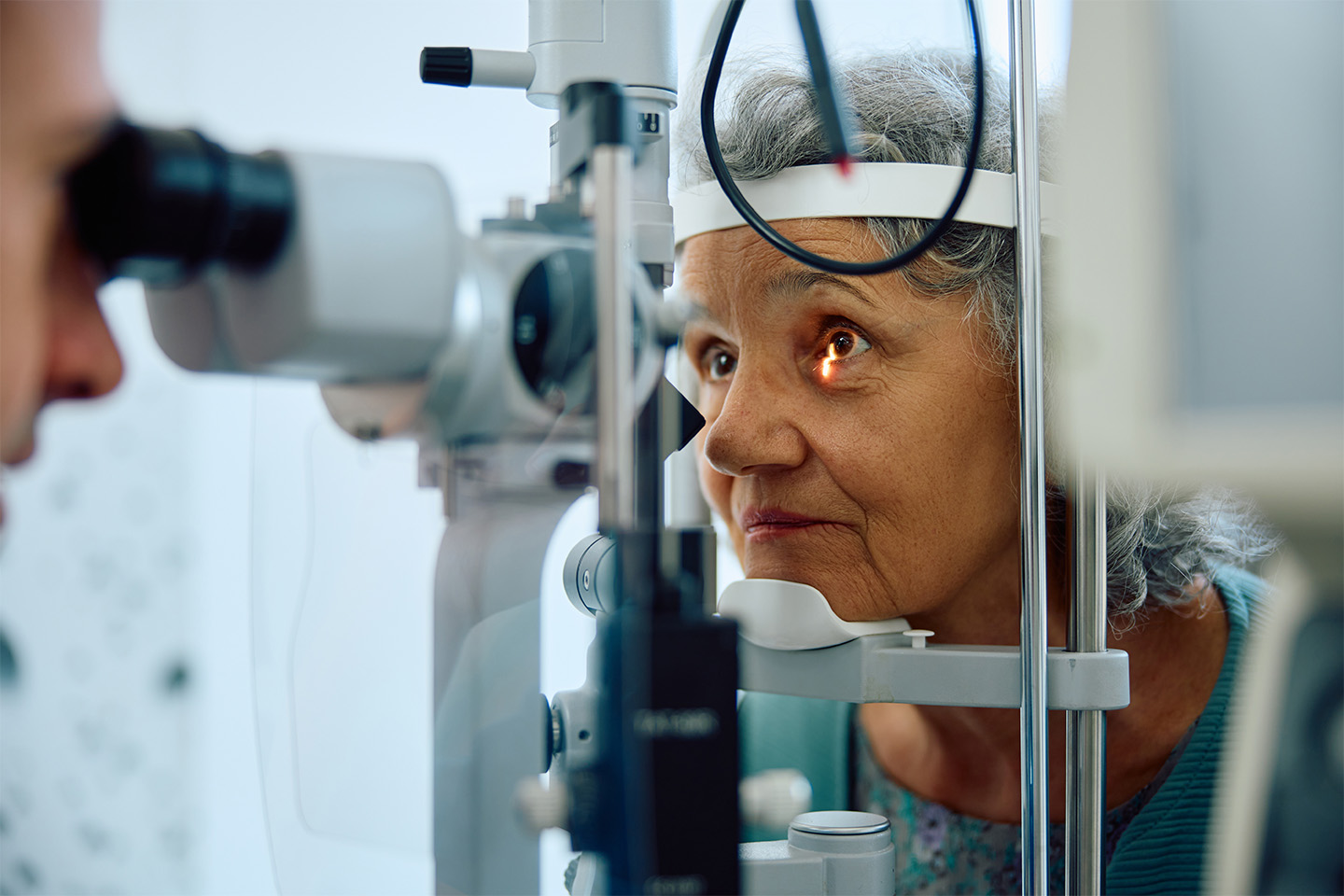How to Prevent Diabetic Eye Disease

Many people with diabetes also experience diabetic eye disease, but there are effective options for treatment and prevention.
The CDC estimates that 30 million Americans are living with diabetes, and one in four of them don’t realize that they have it. Additionally, more than a third of Americans are living with pre-diabetes, which can quickly turn into full-blown diabetes if left untreated.
Although diabetes is common, it is no small matter. In fact, it is the seventh leading cause of death in the United States. By far the most common variety of diabetes is type 2 diabetes, which is more likely to occur in people who have a family history of the disease, or those who are overweight, physically inactive, or over 45 years old. Plus, since this type of diabetes develops later in life, many people do not know they are at risk until the disease has already manifested.
Diabetes can affect everything from your nervous system to your kidneys — and it can even damage your vision. This November, in honor of Diabetic Eye Disease Awareness Month, we’ll be discussing the risk factors of diabetic eye disease, and how you can prevent vision loss.
Types of Diabetic Eye Disease
Eye damage from diabetes can progress into blindness if left untreated. If you believe you’re at risk, it’s important to learn the signs and symptoms of diabetic retinopathy and diabetic macular edema.
Diabetic Retinopathy
Diabetes causes an unnatural increase in blood sugar, which can damage the walls of your blood vessels. Retinopathy means the walls of the blood vessels at the back of your eye have thinned to the point of swelling — and, in some cases, this can cause them to leak blood into the retina.
There are two types of diabetic retinopathy: non-proliferative, and proliferative. Non-proliferative diabetic retinopathy occurs when the blood vessels around your retina (the membrane at the back of your eye which converts light into electrical impulses) swell and leak. This swelling can result in vision loss when blood vessels are blocking blood flow to the retina and depriving it of oxygen.
Proliferative retinopathy is a more invasive form of retinopathy that occurs when the blood vessels around your retina block so much oxygen that your retinal region begins to proliferate new blood vessels, which can fill your eyes with blood. Proliferative retinopathy can be extremely painful, and can even cause blindness.
Diabetic Macular Edema
Diabetic macular edema (DME) is another eye disease that can result from diabetes. Macular edema occurs when blood vessels at the back of your eyes leak blood, fluid, or cholesterol into your macula and fovea, which are membranes near the retina. Macular edema mainly damages your central vision, and can also lead to blindness.
How Can I Prevent Diabetic Eye Disease?
People with diabetes are at a heightened risk of diabetic eye disease. However, if you have diabetes or pre-diabetes, you can take concrete steps to protect your vision.
If you decrease the risk factors of blood vessel damage, you can decrease the risk of diabetic eye disease. In general, people who are diabetic should make the maximum effort to maintain a healthy weight, control blood sugar levels, and monitor blood pressure. It’s also important to follow a healthy diet, quit smoking, and exercise regularly.
If you have diabetes, it’s essential to visit your eye doctor frequently. All diabetic patients should get a comprehensive dilated eye exam at least once a year, or as often as your eye doctor recommends. Comprehensive dilated eye exams are different than standard vision tests, so make sure to tell your eye doctor that you are seeking a diabetes-related eye exam.
If you’re concerned about your eye health, we encourage you to schedule an appointment with the experienced eye doctors at ICON Eyecare. We’ll help you minimize your risk of diabetic eye disease and ensure your vision remains sharp and clear.
Request An Appointment.
Give us a phone call at (970) 256-0400 Monday – Friday, 8am-5pm to schedule a consultation.










 (970) 256-0400
(970) 256-0400